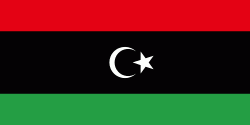Qatrun (Al Qaţrūn)
Qatrun, Al Katrun, Gatrone, or Al Gatrun (القطرون) is a village in the Murzuq District in southern Libya on the main road to Chad and Niger. It has a filling station (gas station) and a Niger consulate office is located there. When the border checkpoint 310 kilometres south at Tumu is closed, travelers crossing into Libya from Niger report in at Qatrun.
The town was briefly captured by the National Liberation Army during the Libyan Civil War in July 2011. On 23 July, Gaddafi forces recaptured the city and continued south towards Al Wigh. The National Liberation Army later recaptured the village.
* Satellite map of al-Qatrun at Maplandia.com
The town was briefly captured by the National Liberation Army during the Libyan Civil War in July 2011. On 23 July, Gaddafi forces recaptured the city and continued south towards Al Wigh. The National Liberation Army later recaptured the village.
* Satellite map of al-Qatrun at Maplandia.com
Map - Qatrun (Al Qaţrūn)
Map
Country - Libya
 |
 |
| Flag of Libya | |
Libya has been inhabited by Berbers since the late Bronze Age as descendants from Iberomaurusian and Capsian cultures. In classical antiquity, the Phoenicians established city-states and trading posts in western Libya, while several Greek cities were established in the East. Parts of Libya were variously ruled by Carthaginians, Persians, and Greeks before the entire region becoming a part of the Roman Empire. Libya was an early center of Christianity. After the fall of the Western Roman Empire, the area of Libya was mostly occupied by the Vandals until the 7th century when invasions brought Islam to the region. In the 16th century, the Spanish Empire and the Knights of St John occupied Tripoli until Ottoman rule began in 1551. Libya was involved in the Barbary Wars of the 18th and 19th centuries. Ottoman rule continued until the Italo-Turkish War, which resulted in the Italian occupation of Libya and the establishment of two colonies, Italian Tripolitania and Italian Cyrenaica (1911–1934), later unified in the Italian Libya colony from 1934 to 1943.
Currency / Language
| ISO | Currency | Symbol | Significant figures |
|---|---|---|---|
| LYD | Libyan dinar | لد | 3 |
| ISO | Language |
|---|---|
| AR | Arabic language |
| EN | English language |
| IT | Italian language |















